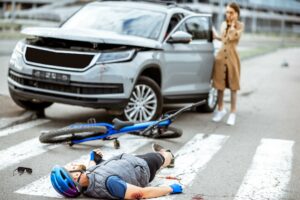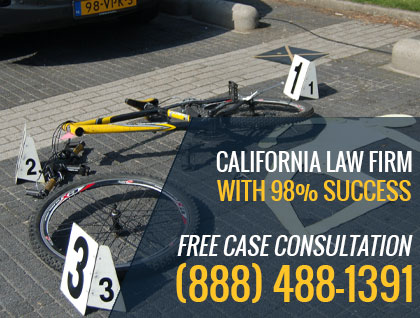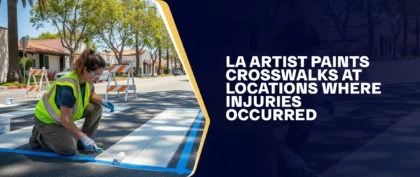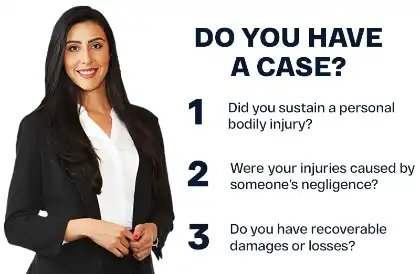Table of Contents

The National Transportation Safety Board (NTSB) has not analyzed bicycle safety in the United States since 1972. In the last several years, multiple safety issues concerning bicyclists and other at-risk road users have become evident in reports published by the NTSB (NTSB 2013a, 2017a, 2017b, 2018a, 2018b). NHTSA reports that 783 bicyclists died in traffic crashes in 2017. The data is comparable to the number of deaths caused by railroad or boat accidents. It also underscores the importance of the NTSB’s renewed focus on bicycle safety research and countermeasures.
Bicycles are more available than they were back in 1972, and more people are using them as a means of transportation, recreation, and exercise. These facts, combined with the startling statistics regarding fatalities, beg for the NTSB to review bicyclists’ safety again. The safety report from the NTSB provides updates and information on bicycle safety in the United States. It scrutinizes the rates and risk factors of bicycle–motor vehicle accidents on roadways and examines their suitable countermeasures.
Analyzing The Data
Like pedestrians and motorcycles, bicyclists are a vulnerable class of road users, as they lack the protection of an enclosed vehicle compartment. In the event of a crash, bicyclists are more likely to suffer injuries or death due to this lack of protection. The NTSB issued reports regarding the safety of motorcyclists and pedestrians in 2018. With these reports and with the bicyclist safety research report, the NTSB is increasing its efforts to address safety issues with vulnerable road users.
When conducting research, the NTSB used the following methods, which are both qualitative and quantitative:
- Reviewing countermeasures and research literature.
- Analyzing crash and injury data.
- Interviewing national, state, and local traffic safety stakeholders.
The goals of the research were to:
- Define fatal and non-fatal trends associated with bicycle–motor vehicle crashes.
- Observe the scope and nature of bicycle accidents and injury risk factors, and assess data limitations.
- Recognize successful countermeasures that may not already be fully utilized.
- Evaluate obstacles that could interfere with the full use of those countermeasures.
- Discover emerging issues that are relevant to bicycle safety.
Bicyclists involved in accidents with motor vehicles are more likely to suffer severe injuries than those in other types of collisions. Thus, this study focuses on crashes between bicyclists and motorized vehicles and highlights existing and emerging countermeasures designed to improve bicyclist safety on public roads.
These measures include the design of roadways and infrastructure that can separate bicycle riders from motor vehicle traffic and conspicuity enhancements for both bicycles and their riders. In addition, other safety measures include vehicle technologies that reduce collisions between motorists and bicyclists, as well as protective equipment that can decrease the severity of injuries to bicyclists in the event of a crash with another vehicle.
It is important to note that this study did not involve single bicycle crashes or pedestrian–bicycle accidents. However, many of the safety countermeasures that the study focused on potentially prevent other types of bicycle crashes or decrease the severity of injuries.
Identified Safety Issues
The report found the following safety issues when it comes to bicycle and vehicle accidents:
Designing Safer Roadways For Bicyclists
Studies show that accidents involving bicycles and cars happen more often at intersections. If the crash happens at a midblock location, the severity can be higher. In general, the majority of people drive at higher speeds at midblock locations, which tend to be higher than those controlled by traffic lights, stop signs, or other turning vehicles. Hence, bicyclists need to be separated from other motor vehicles, which can be done with the help of separated bike lanes, intersection treatments, and road diets. Injuries and fatalities can also be reduced by lowering the travel speeds of motor vehicles in places where traffic speed and volumes are increased.
Enhancing Visibility
Oftentimes, before an accident occurs, a motorist and a bicyclist fail to see each other in time. There are many reasons for this. In approximately one-third of these crashes that killed the bicyclists, the motor vehicle was overtaking the bicycle, and the motorist said they did not see the bicyclist before the crash. Increasing the visibility of everyone on the roadway may reduce the chances of an accident when the roadway must be shared. Bicyclists use countermeasures such as wearing bright or reflective clothing and utilizing bicycle lights and reflective materials. Drivers use enhanced motor vehicle headlights and in-vehicle crash warning and prevention systems. These countermeasures can help motorists spot bicyclists before an accident occurs.
Decreasing Head Injuries
The primary cause of bicycle-related deaths is a head injury. These injuries are common in bicycle and motorcycle accidents. Research indicates that helmets may reduce the risk of head injury in bicycle crashes. Despite encouragement for helmet use and warnings, underutilization of helmets still persists. Studies suggest that increased helmet use among bicyclists across age groups may help reduce the incidence of deaths and severe injuries. The report recommends that both state and local governments take steps to increase helmet use, such as implementing helmet distribution programs, conducting effective educational campaigns, and mandating helmet use for bicyclists.
Findings Of The Study
- It is likely that the current data available underestimates the level of bicycling activity in the United States.
- Measuring bicycle safety could be improved by combining traditional and innovative data collection processes.
- It is likely that police crash report data underestimates the scope of non-fatal injuries bicyclists sustain.
- Fatal and catastrophic injuries in bicyclists are more likely to result from accidents with motor vehicles at midblock locations.
- Bike crashes with motor vehicles at the midblock locations could be prevented with separated bike lanes.
- A network of safer roadways for bicyclists can be created when recognized safety countermeasures are combined.
- The implementation of separated bike lanes, as well as intersection treatments and the transition between them, could increase the implementation of bike lanes by transportation planning and engineering practitioners.
- Decreasing the speed of traffic can increase bicycle safety by decreasing the chances of a severe or fatal injury if a crash occurs.
- The road diet is a safety countermeasure that can be effective in reducing traffic speeds and providing more space on roadways for the implementation of bicycle facilities, such as separated bike lanes.
- Including separated bike lanes and intersection safety treatments in the Federal Highway Administration’s Proven Safety Countermeasures initiative and Every Day Counts Program could be a catalyst for the adoption and improvement of bicycle safety.
- Improving the visibility of bicycles could reduce the chances of crashes between bicycles and motor vehicles.
- The requirements for bicycle visibility were established in 1980. They may be outdated and do not adequately consider the modern advances in bicycle visibility materials and technologies.
- A revision of the Federal Motor Vehicle Safety Standard 108 to allow adaptive headlight systems and the requirement to evaluate headlights in real-world settings rather than in a laboratory environment would likely result in headlights that improve a driver’s ability to detect bicyclists and other vulnerable road users.
- The incidence of collisions between motor vehicles and bicycles could be decreased if collision avoidance systems were modified to detect bicycles when the driver cannot see them. This could mitigate the resulting accidents and injuries.
- The National Highway Traffic Safety Administration’s delay in updating the New Car Assessment Program has probably slowed the development of essential systems for vulnerable road users and the implementation of these systems into vehicles.
- The United States Department of Transportation’s slow progress to develop standards for connected vehicle technology has delayed potentially lifesaving technologies.
- Drivers who are behind the wheel in large vehicles have a more difficult time detecting vulnerable road users because their blind spots are larger.
- The need for performance standards to maintain blind-spot detection systems that can detect vulnerable road users continues.
- The primary cause of death in bicycle-related deaths is a head injury. Studies indicate that head injuries are common in bicycle-vehicle collisions.
- Bicycle helmets provide protection and can help decrease the chances of a head injury in an accident.
- The underutilization of bicycle helmets contributed to the increase in deaths and serious injuries among bicyclists involved in a crash.
- Studies indicate that helmet mandates may be an effective method for increasing helmet use and reducing bicycle-related injuries.
- An inclusive plan that includes helmet legislation and complementary non-legislative interventions may help increase helmet use among bicyclists of all ages.
The New NTSB Recommendations
The NTSB recommends the following:
- To the Intelligent Transportation Systems Joint Program Office: Expand the vehicle-to-pedestrian research efforts to help incorporate bicyclists and other vulnerable road users into the safe deployment of connected vehicle systems.
- To the National Highway Traffic Safety Administration: The New Car Assessment Program should include tests to evaluate a car’s collision avoidance systems in scenarios involving bicycles. Establish a bicycle safety coalition of stakeholders to develop a comprehensive national strategy aimed at increasing helmet use among bicyclists of all ages.
- To the Federal Highway Administration: Create strategies to combine traditional and innovative bicycle-counting approaches that count bicycling activity data. Share the methods with state transportation departments. Include separate lanes for bikes and intersection safety treatments that are listed in the Proven Safety Countermeasures, as well as the Every Day Counts program.
- To the United States Consumer Product Safety Commission: Orchestrate an evaluation to find out if bicycle visibility could be increased by modifying the requirements listed in Title 16 Code of Federal Regulations 1512.16, and if so, modify the regulation accordingly.
- To the 50 States, the District of Columbia, and the Commonwealth of Puerto Rico: Mandate that all bicyclists wear an age-appropriate helmet when riding their bikes.
- To the American Association of State Highway and Transportation Officials: Utilize geometric design guidance materials on separated bike lines, intersection treatments, and the transition between them upon the next revision of the Guide for the Development of Bicycle Facilities.
Were You Injured In A Bicycle Accident? Call A California Bicycle Accident Lawyer
Bicycle accidents can happen for many reasons, often due to driver inattentiveness or unsafe road design. These accidents can leave victims with painful injuries that can disrupt their lives. If this happened to you, consider seeking legal counsel to help you understand your rights and legal options.
Contact Arash Law at (888) 488-1391 or online to get your free initial case consultation with an experienced bicycle accident lawyer from our firm. Our car accident lawyers, truck accident attorneys, motorcycle accident attorneys, and other injury attorneys can handle your claim and advocate for your rights. Our Los Angeles-based firm serves bike accident victims throughout California, including Berkeley, San Francisco, Riverside, San Jose, San Diego, Sacramento, and Sherman Oaks.





























